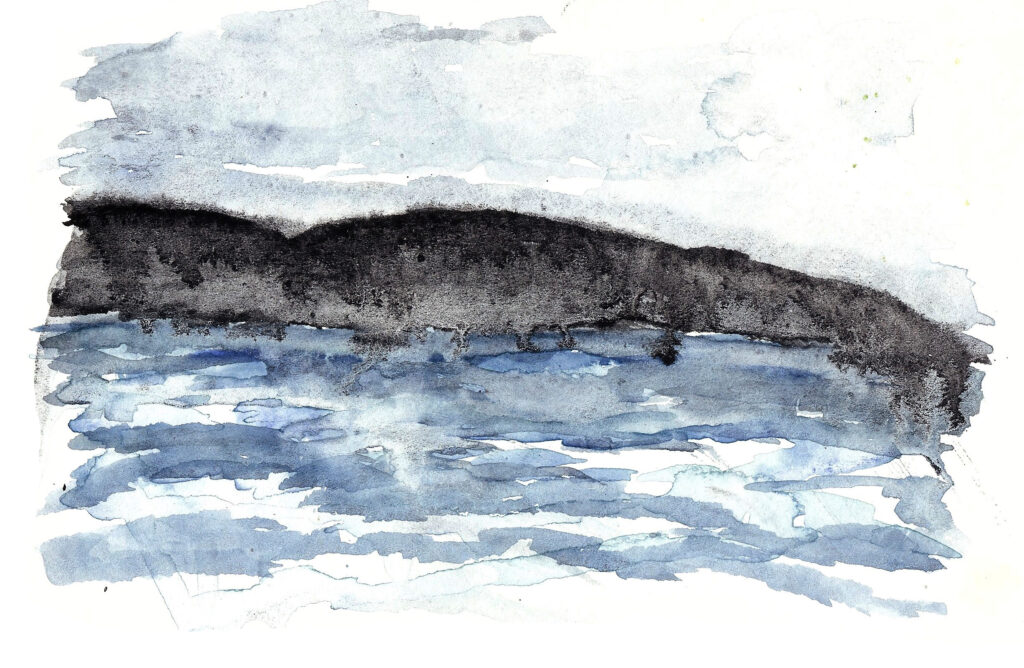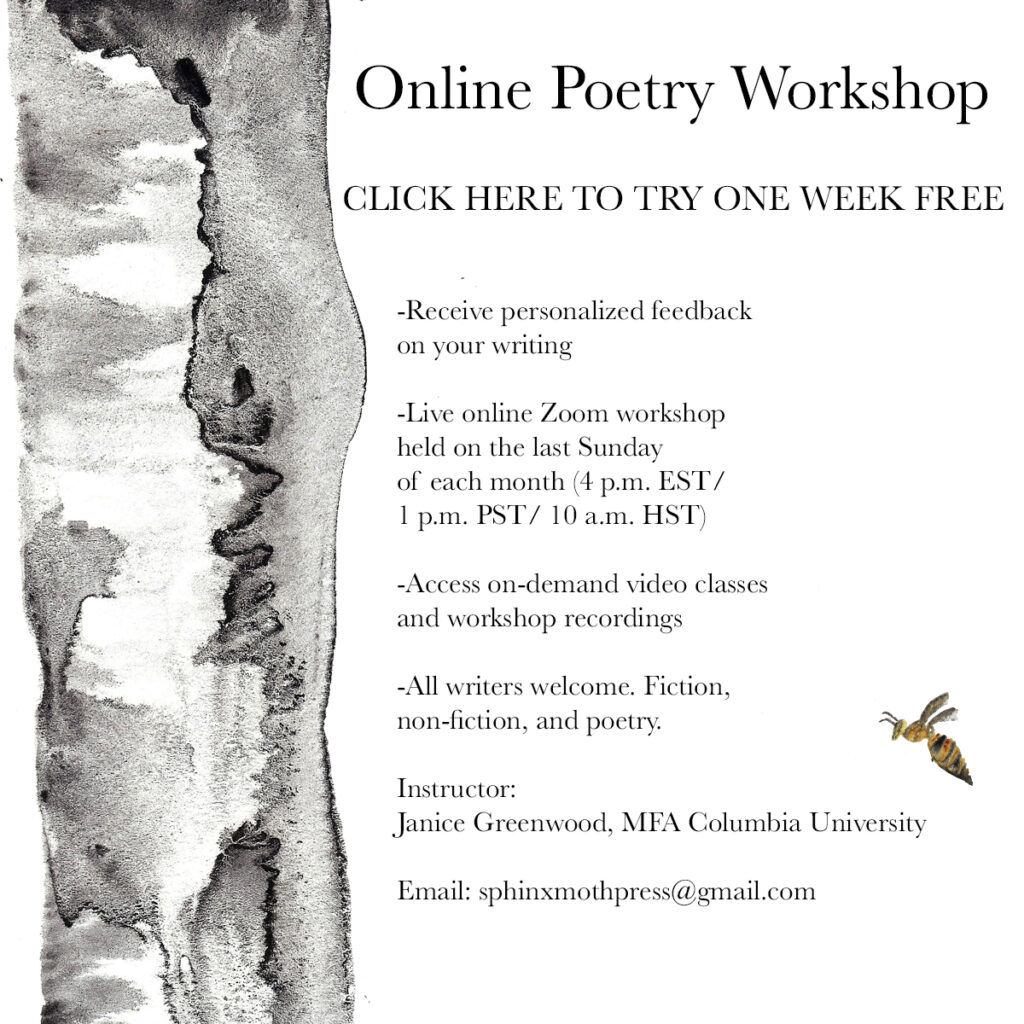Writing about gratitude is rare. Books that openly express gratitude rarer still. Psychologists have done research on whether it is possible to help patients heal by helping them start a gratitude practice, for example, by having them write letters of gratitude to another person, but I’m somewhat skeptical about gratitude as a homework assignment. I never much took to gratitude lists, and can’t say I actually started a real and genuine gratitude practice until I moved to Hawai’i. My gratitude practice doesn’t involve lists, nor does it involve the more suspicion-inducing device of a gratitude journal or app. It often involves my sitting in silence, watching the sun rise over Diamond Head, and reminding myself how lucky I am do be here—present on this planet, present in Hawai’i, and present and able to find the courage to finally do the things I’ve always wanted to do (publishing a poetry book and this blog are among them). I’m much more fascinated about what can be learned from those around me who are genuinely grateful. Grateful authors are included, and that brings me to Robin Wall Kimmerer.
Reading Robin Wall Kimmerer’s prose is like sliding into a steaming hot bath of gratitude, or like sipping a hot tea of gratitude, or like being embraced by a warm embrace of loving gratitude. Time and time again in Robin Wall Kimmerer’s stunning collection of essays Braiding Sweetgrass: Indigenous Wisdom, Scientific Knowledge, and the Teachings of Plants, Kimmerer interrogates modern culture and asks if there might be an alternative way to define personal responsibility, one that includes responsibility to community, to the land one lives upon, to the water one drinks, and to the food one eats. The threads of responsibility, in this framework, are not created by the iron chains of law, but rather, by the gentler bonds of gratitude.
Ever since I’ve moved to Hawai’i, I’ve felt something I never felt living anywhere else. It’s hard to define exactly, but never have I felt such an imperative to give back to those around me and to the land, and when I trace that desire back to its source, the source is always gratitude. I’ve lived in Miami, New York, Gainesville, Toronto, and places in between, and I have sometimes felt gratitude, but this is a new feeling. There is an urgency to my urge to give back, an urgency to my gratitude. It overwhelms me. It shapes the decisions I make.
Maybe this is the kind of feeling I imagine people have when they are home.
One cannot just move to Hawai’i without raising all kinds of ghosts. There is the ghost of colonialism, the ghosts of all the other fools who thought that moving half a Pacific away from everywhere else would change their lives or make them better people, and the ghosts of the indigenous people who sailed their canoes here, who brought their legends thousands of miles to this land.
Moving to Hawai’i won’t change your life. Too many haunted people come here and bring themselves along for the ride, and trust me, Hawai’i doesn’t need that baggage. But, if you are humble, Hawai’i, and the act of living on an island, has lessons to teach.
Modern capitalistic culture defines the limits of our responsibilities to one another in terms of monetary exchange, but indigenous cultures often define responsibility in terms of gifts and gratitude. When the GOP talks about personal responsibility, it means personal responsibility to pay your bills, buy your food, and pay your rent, and to pay your taxes. But when personal responsibility is considered in the light of gratitude, it becomes a responsibility we all have to each other, to our communities, to the soil, to the water, to the air, and to the forests. When you live on an island, there’s nowhere to go. Everyone has a responsibility to protect the little land we have.
Often I have sat stupid before the beauty of Hawai’i. To live here often feels like having been given a gift you’ll never be able to pay back. Soft rains drift down from the misty peaks of Tantalus, seeming to threaten a storm, but they come instead to soften the afternoon heat with a coolness perfumed by the sea. Waikiki seldom gets much rain. The overcast days come as a shock.
In the mornings, when I surf, the sea turtles rise from the bottom of the reef, and they bring with them the ordinary persistence of beings who have survived, who will survive. A blue plastic bag drifts by looking like a man-of-war and I feel a pang of responsibility again, to these beaches, to the sea, and to the creatures within. I grab the bag. I measure the distance from the sun to the horizon and therefore come to know the time. It’s time to work. Time to write. I paddle home. I throw out the trash.

But how will I meet my responsibilities if I do not know what they are?
Kimmerer distinguishes between being indigenous to a place and being naturalized. I’ll never be indigenous to Hawai’i, but perhaps I can someday become naturalized: “Being naturalized to place means to live as if this is the land that feeds you, as if these are the streams from which you drink, that build your body and fill your spirit… Here you will give your gifts and meet your responsibilities.”
To live on an island is to have a particular responsibility. No one, however strange, is really a stranger. Our resources are limited. If disaster were to strike, we are all thousands of miles away from land. We all felt this together during the early weeks of the pandemic, when stores closed, and grocery shelves went empty. Island living demands additional care for one’s environment, and for one’s neighbor. If we use shitty pesticides on our lawn, they go into the sea, where we all play, where our kids play.
Kimmerer argues for an interaction with the environment that involves exchange and a moral imperative to protect the lives that we extinguish to nourish our own: “How do we consume in a way that does justice to the lives that we take?” This requires a revisioning of the natural world from a resource we can use, to a living entity that can be harmed with overuse. “The taking of another life to support your own is far more significant when you recognize the beings who are harvested as persons, nonhuman persons vested with awareness, intelligence, spirit—and who have families waiting for them at home. Killing a who demands something different than killing an it.”
So often we view conservation as a zero-sum-game. If humans take resources, nature loses. If humans don’t take resources, nature wins. Kimmerer imagines another way. What if humans could interact with nature responsibly, living sustainably, taking only what they need, restoring when they don’t? What if I could catch a fish or swim in the sea and not think I’m just taking and hurting nature?
Kimmerer writes that her students often only think about human interaction with the environment as destructive. But even our best intentions at restoration have their unintended consequences, as Kimmerer explains in her essay “A Mother’s Work,” where she finds that cleaning a pond results in the death, not only of algae, but of tadpoles and other creatures that reside within the nutrient-rich ecosystem: “It came to me once again that restoring a habitat, no matter how well intentioned, produces casualties.”
I have learned from those around me that human interaction with the environment doesn’t always need to be destructive. Native Hawaiians nurtured food trees in the forest, and to this day, you can walk through a forest of avocado trees up in the mountains above Honolulu. To this day, you can find nutrient-rich breadfruit trees growing in some forests. Native Hawaiians kept fishponds, and they farmed their fish. This modification of the seashore wasn’t destructive, and afforded added protection to the reef fish that weren’t overfished as a result.
Modern science often draws a stark distinction between science and ancestral knowledge. Robin Wall Kimmerer, who is a professor of Environmental and Forest Biology at SUNY College of Environmental Science and Forestry believes otherwise. She believes that ancestral wisdom can sometimes be measured by science so that we can better understand the ways traditional practices can inform modern science, agriculture, and ecology. She writes eloquently about a graduate student who studied methods of harvesting sweetgrass. Skeptical deans at the university claimed that “anyone knows that harvesting a plant will damage the population.” But the graduate student wasn’t daunted, and her research revealed that harvesting, when performed with restraint, actually promoted the plant population. “We are all the product of our world-views—even scientists who claim pure objectivity.” Some plants have symbiotic relationships with humans. Reading Kimmerer, it almost seems possible to imagine a world in which humans interact positively with their environment. It gave me hope. It makes me think about the men and women restoring ancient Hawaiian fish ponds in Pearl Harbor, so that maybe in the next generation, we can fish there, and eat. It makes me think about the men and women planting taro in the mountains so that maybe, when the hundred year flood comes, it won’t drown us all.
Human beings must consume in order to survive. But how we consume is a choice. Kimmerer writes: “When does taking become outright theft? I think my elders would counsel that there is no one path, that each of us must find our own way.” Something gives up its life in the cycle of life and Kimmerer often views this cycle of giving as part of the earth’s immense gifts. But I keep thinking over and over about Kimmerer writing about factory farming and mechanized slaughterhouses. How can that be anything other than theft?
“The Honorable Harvest asks us to give back, in reciprocity, for what we have been given. Reciprocity helps resolve the moral tension of taking a life by giving in return something of value that sustains the ones who sustain us. One of our responsibilities as human people is to find ways to enter into reciprocity with the more-than-human world. We can do it through gratitude, through ceremony, through land stewardship, science, art, and in everyday acts of practical reverence.”
I forage in the mountains and find avocados, breadfruit, lemons, and guava. I eat the things the earth here freely grows. I buy fish pulled from the sea. I am in awe it still works at all.
I have often asked myself what I owe the earth and the people around me. What do I owe Hawai’i? What can I give back?
Since moving to Hawai’i, I have often been filled with immense waves of gratitude to be able to inhabit this sacred land, which feeds me, shelters me, nourishes my soul, sustains me. I have often asked myself what I can give back. The answer keeps returning, quiet at first, barely a whisper, but then louder.
I can give my words. I can give my words.
I sometimes wonder if there’s futility in writing, in the work I do, but “The work of living is creating a map for yourself.” And so I keep writing because to “carry a gift is also to carry a responsibility” and because I believe that there is love, kindness, compassion, forgiveness, and restoration in words, and because I believe that words will be the first stones we throw into the water—first to create a ripple, and then to create a makeshift bridge—to perhaps chart another way to live more lightly upon this planet.
Maybe I’ll never deserve Hawai’i. But I’ll try to write my way there, anyway. With gratitude.

About the Writer
Janice Greenwood is a writer, surfer, and poet. She holds an M.F.A. in poetry and creative writing from Columbia University.
